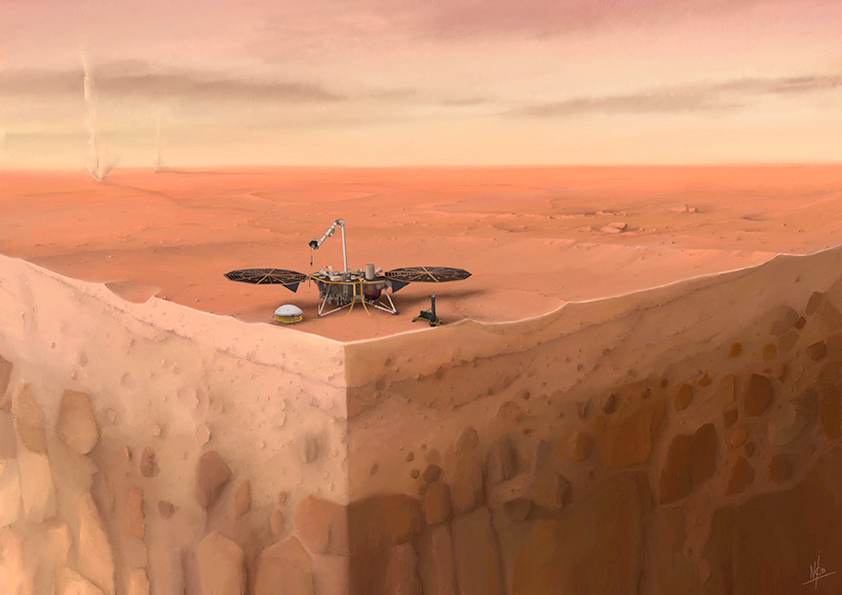Martian seismology begins to reveal the planet’s structure
In a series of 6 articles published this Monday February 24 in Nature Geoscience and Nature Communication, the scientific team behind NASA's InSight mission begins to lift the veil on the mysteries of the planet Mars.

Publication date: 14/02/2020
Observatories, Press, Research
Related observatories : InSight Observatory
Related themes : Earth and Planetary Interiors







